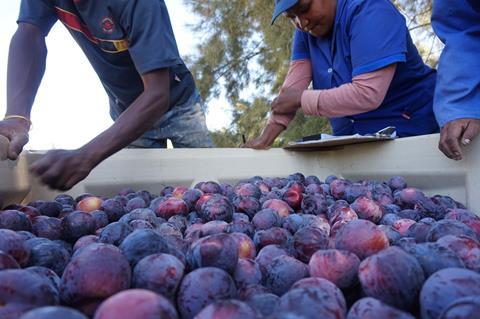
Changing demands in the European market are prompting the fruit export business in South Africa’s Western Cape provinceto shift its commercial focus slightly and invest in new varieties to keep up with trends, according to several of the country’s leading industry figures.
In particular, the industry appears to be playing a more active role in establishing what exactly consumers in key markets require, using the information it gleans to make informed investments in production and new product development.
“We’re working more closely now with importers and retailers – especially in Germany – to explain the kind of quality we want to see in the market,” says Jacques du Preez, product manager at national deciduous fruit association Hortgro. “In the past, we were told what the consumer wanted. Now, we talk to consumers and have a much better idea.”
The success of a recent campaign to promote South African produce in the UK under the Beautiful Country, Beautiful Fruit slogan seems to have had a knock-on effect as retailers in other parts of Europe become aware of the higher returns that can be generated from such intensive and sustained promotion of the country of origin.
John Valentine, chairman of the agency responsible for the campaign, Red Communications, explains that taste has become a hugely important factor both in the UK and Germany, with consumers in both countries moving away from hard fruit to ripe-and-ready, especially when it comes to peaches, pears, nectarines and plums.
“We believe the way retailers present the fruit to consumers especially in Germany could have a massive impact on sales,” he observes. “Ripe-and-ready is what consumers want and, in many cases, they are still not being presented with it.”
Bigger value in Germany
From the perspective of some exporters, Germany is indeed changing as a market. This is particular true for plums, says Jan Hoon, marketing manager at the country’s largest plum exporter, Franschhoek Marketing.
“In Germany, more and more retailers are moving away from our early varieties and waiting to start at the end of January, early February. There has also been a shift from cheap, discounted fruit to bigger sizes and high-value product, which has been quite positive for us,” Hoon explains.
He adds that German buyers already keen on the idea of procuring ripe-and-ready plums are now looking for the same type of product in peaches and nectarines.
As a result, the traditional gap between what can be earned in South Africa’s largest European market, the UK, and the returns possible on the European mainland appears to be closing, with the situation perhaps even reversing in some cases.
And with South Africa’s fruit exporters watching carefully to see what the UK’s planned exit from the EU will mean for the market, the next few years could see further interesting developments in terms of that market diversification trend.



